August 2023
Considerate Crayon for People and Nature — Delivering Ecology, Safety, Security, and Local Production for Local Consumption
-
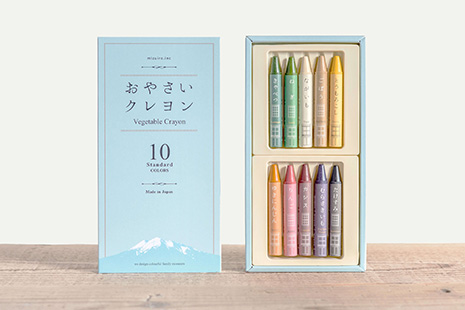
Oyasai Crayons made from rice and vegetables -
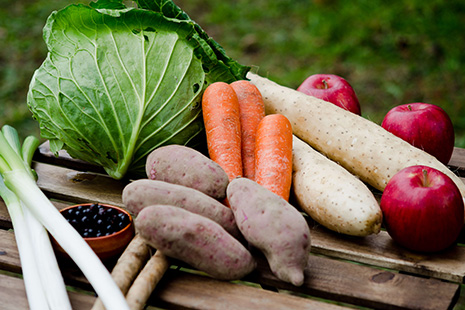
Some vegetables that are used as material for crayons
-
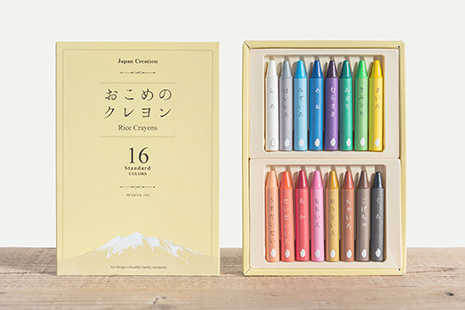
Bright-colored Okome no Crayons made primarily from rice oil -
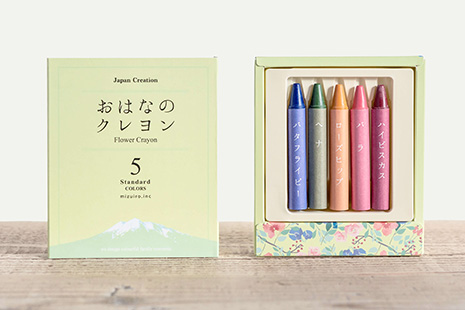
Vegetable-based Ohana no Crayons that contain the colors of actual flowers -
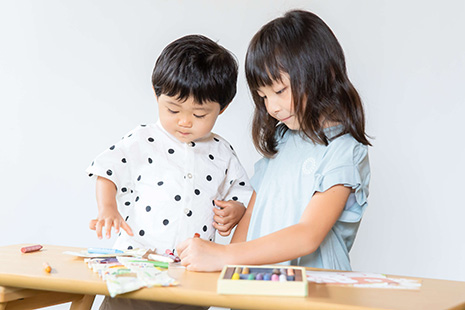
Kids draw with crayons developed by mizuiro Inc.

Based on a concept that stresses safety and security, Oyasai Crayons ("Veggie Crayons") are made mainly from rice oil, vegetables, and fruits, so the material is not harmful even if a child puts a crayon in their mouth. The crayons, with their uniquely mild colors, were awarded by the Japanese Government, and that was the "Commendation for Science and Technology by the Minister of Education, Culture, Sports, Science and Technology" Science and Technology Award* for fiscal 2022.
Oyasai Crayons are made from rice oil, vegetables, fruits, and other ingredients, and they help reduce food loss by making use whenever possible of out-of-spec products that do not make it to market and scraps that would otherwise be thrown away. For example, the "Cabbage" color is made from the outermost leaves of cabbage plants, which are usually either left in the soil for compost or discarded. Likewise, the "Apple" color is made from apple peels that are left over after dry apple chips are processed. Farmers gather each of these items so they can be reborn as raw materials. Oyasai Crayons are based on liquid rice oil and solid rice wax extracted from rice bran,** which until now has been thrown away. Unlike conventional crayons, these crayons are made almost entirely from nature-derived raw materials.

Kimura Naoko, president of mizuiro Inc., headquartered in Aomori City, Aomori Prefecture, worked hard to develop this product. Oyasai Crayons were born from "a desire to make crayons for my only daughter from materials that are safe and secure even if a child puts them in their mouth," and "to make them from nature-derived materials from my home prefecture of Aomori."
Since its establishment in 2014, mizuiro Inc. has also been involved in the OEM (Original Equipment Manufacturer)business, manufacturing products for other manufacturers' brands. When factoring in the national brands of each manufacturer and the store brands of major wholesale and retail chains, the number of colors offered has expanded to about several dozen as of July 2023. Each color has a natural name such as "Cabbage," "Carrot," or "Green Onion." When a crayon is used, it faintly releases the familiar aroma of its ingredients. Most of the vegetables and fruits used are grown in Aomori Prefecture. The prefecture accounts for a large share of apple and black currant production in Japan. These are used because they help with local production for local consumption, and also because they contribute to sustainability by reducing distribution costs and promote recycling within the local community.

Oyasai Crayons enjoyed a huge response immediately after they went on sale with the concept of crayons could be safe even if put in the mouth, but the development process was one of repeated trial and error. When the company tried drying finely chopped vegetables and mixing them with commercially available wax, it did not produce sufficient coloring or hardness, and the mixture left the hands sticky. They then decided to request a collaboration with Toichi Bungu Kogyosho, a long-established crayon workshop in Nagoya, Aichi Prefecture. Manually molding the crayons individually enabled them to use raw materials that are difficult to use in machines, and taking time to cool them enabled them to come up with crayons that are hard enough to keep from breaking even when force is applied, don't feel sticky, and have good color development.

In 2014, Oyasai Crayons cleared the European toy safety standard, which is said to have the world's strictest toy safety inspection,*** and the sales channels have expanded from Japan to the rest of the world. The company has also launched sister products that use pigments that are safe even if put in the mouth. One is Okome no Crayon ("Rice Crayons"), which use rice oil as the main ingredient to produce vivid colors that cannot quite be attained in Oyasai Crayons. Another is Ohana no Crayon ("Flower Crayons"), which are colored using real flowers. The company is constantly receiving requests for collaboration from other companies.
Kimura explains future business prospects in this way:
"As embodied by Oyasai Crayons, the products we create consider ways to utilize unused resources that lie dormant in local communities, while also taking reuse into consideration. We will continue to propose sustainable and rich lifestyles and designs by offering safe, secure products that are considerate of people and nature."

* An award presented by Japan's Ministry of Education, Culture, Sports, Science and Technology (MEXT) to those who have achieved significant success in research, development, public understanding, and so on in science and technology.。
** Rice is made of four layers. Removing the hulls from harvested rice reveals brown rice. Milling the brown rice removes the bran layer and germ, leaving white rice. The bran layer and germ are called rice bran. It is estimated that about 10% of brown rice is rice bran.
*** The European standard for toy safety, EN71-3:2013 (Safety of Toys, Part 3, 2013). It took effect on July 20, 2013 with standards that were amended along with the revision of the European Standard for Safety of Toys EN71-3:2013 (Safety of Toys, Part 3, 2013).

